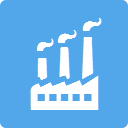EIM Software to Manage Hydro Fracturing Data
Locus Technologies has expanded its flagship product EIM to manage data and information for natural gas exploration and production sites that use hydro fracturing technologies to extract gas from shale.
The relatively new drilling method for natural gas extraction — known as high-volume horizontal hydraulic fracturing, or hydrofracking — carries significant environmental risks. It involves injecting large amounts of water, mixed with sand and chemicals, at high pressures to break up rock formations and release the gas. Anywhere from 10 to 40 percent of the water sent down the well during hydrofracking returns to the surface, carrying drilling chemicals, very high levels of salts and, at times, naturally occurring radioactive material. According to recent NY Times article, there were more than 493,000 active natural-gas wells in the United States in 2009, almost double the number in 1990. Around 90 percent have used hydrofracking to get more gas flowing, according to the drilling industry.
For the natural gas industry to stay in compliance with ever stricter laws to protect drinking water supplies and air emissions, drilling companies need software tools to organize hydrofracking waste data in order to demonstrate to the public and regulators that hydrofracking activities are not endangering natural resources. They also need to prove that any dangerous waste from the wells is handled in compliance with state and federal laws. Although hydrofracking has been used for decades, the technology has become more powerful and more widely used in recent years, producing far more wastewater and attracting much more public and regulatory scrutiny.
Nearly all of the activities associated with hydrocracking, including the assessment of site characteristics, the ongoing monitoring of site conditions and air emissions, and the remediation of adverse environmental impacts, involve the collection and/or analysis of large quantities of data. The specialized software to organize, manage, validate, visualize, store, and report this information formerly did not exist until Locus expanded its award winning, web-based EIM software to provide industry with the necessary tools to do so.
This expanded module in EIM was specifically designed to meet the hydrofracturing industry’s needs for managing subsurface and water quality data that include both analytical chemistry, waste, and radionuclides. Since EIM has been deployed in the Cloud for over ten years at many similar oil and gas exploration sites and nuclear facilities nationwide, the system provides for rapid deployment, an unmatched level of functionality and data security, an extensive set of QC/QC standards, and scalability.
The hydrofracking industry has been in the spotlight in recent months and Locus wanted to provide this business sector with a tool to prove its case to the public and regulators that natural gas production using hydrofacking can be done safely and transparently. As such, we expanded our software offerings to manage and visualize water, waste, wastewater, drilling fluids, radionuclides and air emissions more effectively over the web. We felt that the market needed an off-the-shelf tool targeted to manage hydrofracking data, being that is subject to a different set of state and federal regulatory guidance. Locus’s software provides any natural gas production site that has a need for data management and reporting—and almost all have—the necessary functionality to meet these requirements.
Water quality and waste management are not the only issues at hydrofracking sites. Air pollution caused by natural-gas drilling is a growing threat, too. Locus ePortal software when combined with EIM provides a comprehensive compliance solution for the natural gas industry to manage contaminants in all media ( water, soil, and air) in a single, integrated system through a Single Sign On (SSO).
EIM, Locus’ Environmental Information Management software, is the world’s largest commercial on-demand environmental data management system. EIM completely replaces existing stand-alone data systems and reporting tools to provide a comprehensive integrated solution to one of the environmental industries’ most vexing problems – the centralization and management of complex data pertaining to contaminated water, groundwater, soil, and/or air. EIM provides for the complete electronic processing of analytical data, beginning with the upload of electronic data deliverables from labs, and terminating in state-mandated or federal regulatory exports and reporting. EIM is deployed through Software as a Service (SaaS) model that eliminates most of the difficulties associated with the adoption of a new technology, while offering the opportunity for more rapid customization to meet the ever-changing needs of its user population. The system currently stores over 120 million records for over 15,000 sites worldwide.



